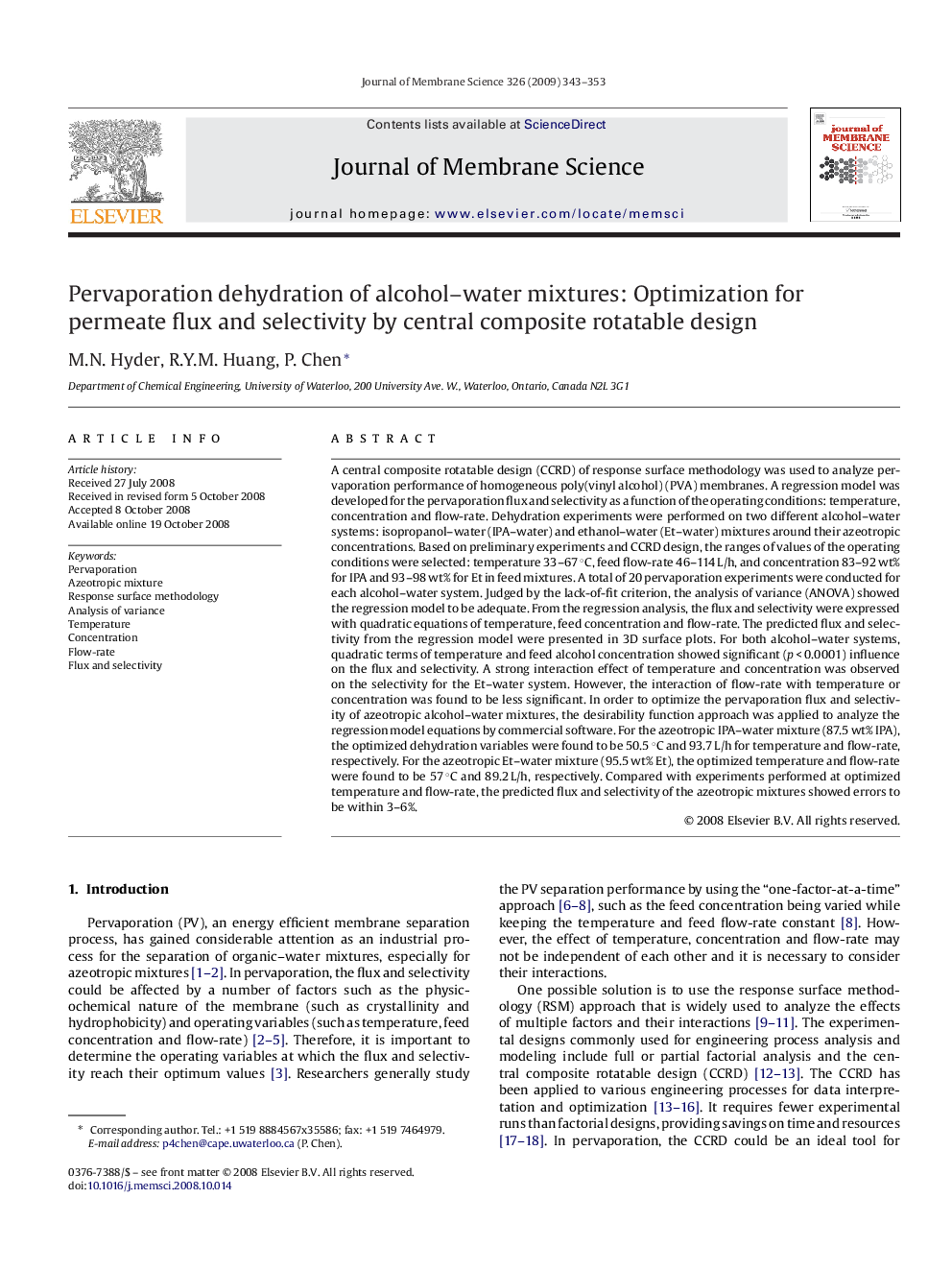| کد مقاله | کد نشریه | سال انتشار | مقاله انگلیسی | نسخه تمام متن |
|---|---|---|---|---|
| 637390 | 883685 | 2009 | 11 صفحه PDF | دانلود رایگان |

A central composite rotatable design (CCRD) of response surface methodology was used to analyze pervaporation performance of homogeneous poly(vinyl alcohol) (PVA) membranes. A regression model was developed for the pervaporation flux and selectivity as a function of the operating conditions: temperature, concentration and flow-rate. Dehydration experiments were performed on two different alcohol–water systems: isopropanol–water (IPA–water) and ethanol–water (Et–water) mixtures around their azeotropic concentrations. Based on preliminary experiments and CCRD design, the ranges of values of the operating conditions were selected: temperature 33–67 °C, feed flow-rate 46–114 L/h, and concentration 83–92 wt% for IPA and 93–98 wt% for Et in feed mixtures. A total of 20 pervaporation experiments were conducted for each alcohol–water system. Judged by the lack-of-fit criterion, the analysis of variance (ANOVA) showed the regression model to be adequate. From the regression analysis, the flux and selectivity were expressed with quadratic equations of temperature, feed concentration and flow-rate. The predicted flux and selectivity from the regression model were presented in 3D surface plots. For both alcohol–water systems, quadratic terms of temperature and feed alcohol concentration showed significant (p < 0.0001) influence on the flux and selectivity. A strong interaction effect of temperature and concentration was observed on the selectivity for the Et–water system. However, the interaction of flow-rate with temperature or concentration was found to be less significant. In order to optimize the pervaporation flux and selectivity of azeotropic alcohol–water mixtures, the desirability function approach was applied to analyze the regression model equations by commercial software. For the azeotropic IPA–water mixture (87.5 wt% IPA), the optimized dehydration variables were found to be 50.5 °C and 93.7 L/h for temperature and flow-rate, respectively. For the azeotropic Et–water mixture (95.5 wt% Et), the optimized temperature and flow-rate were found to be 57 °C and 89.2 L/h, respectively. Compared with experiments performed at optimized temperature and flow-rate, the predicted flux and selectivity of the azeotropic mixtures showed errors to be within 3–6%.
Journal: Journal of Membrane Science - Volume 326, Issue 2, 20 January 2009, Pages 343–353